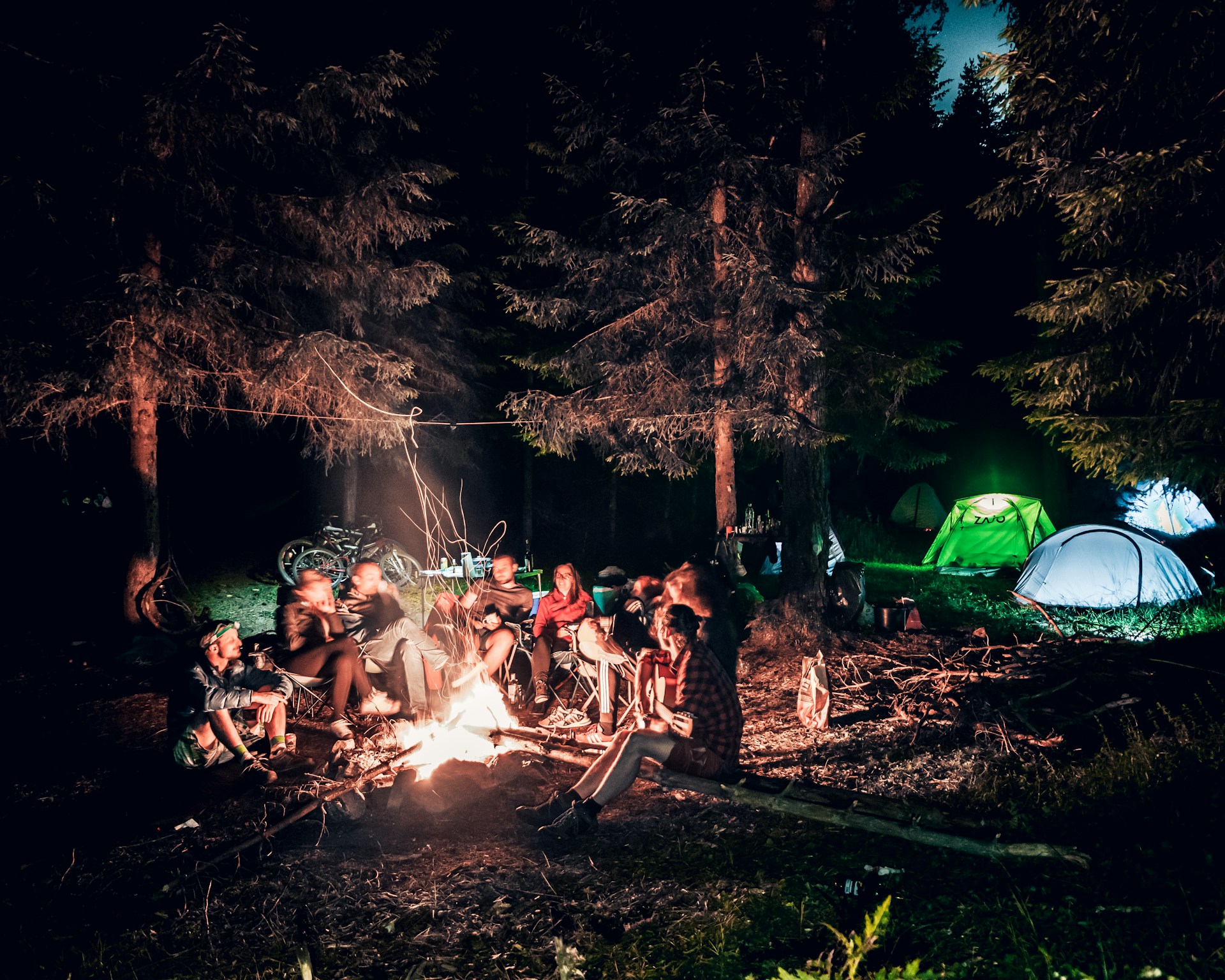Sweden’s pristine wilderness, with its endless forests, sparkling lakes, and rugged coastlines, is a haven for wild camping. Thanks to Allemansrätten, Sweden’s unique Right of Public Access, you can camp freely in nature, making it an affordable and immersive way to explore. This beginner-friendly guide explains how to wild camp responsibly in Sweden, covering the rules of Allemansrätten, top camping spots, and practical tips. Written in a simple, accessible style, this 2000-word article is perfect for those new to outdoor adventures.
Understanding Allemansrätten
Allemansrätten grants everyone the right to enjoy Sweden’s nature, including camping, hiking, and foraging, as long as you respect the environment and private property. You can camp for one night in most wild areas without permission, making Sweden ideal for budget travelers. Understanding these rules ensures a sustainable experience. For those new to Allemansrätten, bombinghub com offers engaging insights into Sweden’s outdoor traditions.
Rules of Allemansrätten for Camping
To camp ethically, follow these Allemansrätten guidelines: stay 150 meters from homes or farms, avoid sensitive areas like bird nesting sites, and leave no trace by packing out all trash. Camp for one night per spot, and don’t disturb wildlife or plants. These rules keep Sweden’s nature pristine. For Allemansrätten tips, enisty com provides beginner-friendly explanations.
Best Wild Camping Spots: Dalarna’s Lake Siljan
Lake Siljan in Dalarna is a serene spot for wild camping, with flat, grassy areas along its shores. The area near Rättvik offers lake views and easy access to hiking trails. Set up your tent on public land, and enjoy swimming or fishing (free). Summer’s mild weather (15–20°C) is ideal. For Siljan camping guides, xinnyword com highlights top spots.
Tiveden National Park
Tiveden National Park, in central Sweden, is a forested haven with small lakes perfect for wild camping. The Stenkällegården area has flat clearings for tents, and you can swim in Lake Örlen. Stick to designated trails to protect the ecosystem. Spring and autumn have fewer visitors. For Tiveden tips, hemoby com shares practical advice.
Stockholm Archipelago
The Stockholm Archipelago, with 30,000 islands, is a wild camping paradise. Uninhabited islets like those near Grinda allow free camping under Allemansrätten. Kayak or take a ferry (€10–20) to reach secluded spots, and enjoy sea views. Summer is best for calm waters. For archipelago camping, fryddy com provides beginner-friendly suggestions.
Lapland’s Arctic Wilderness
In Lapland, Abisko National Park offers Arctic camping with stunning mountain backdrops. The Kungsleden Trail has open areas for tents, and you might spot reindeer or the northern lights in autumn. Winter camping requires extra gear for -15°C. For Lapland guides, mentubing com highlights wild camping spots.
Bohuslän Coast
The Bohuslän Coast features granite islands and sheltered coves ideal for coastal camping. Near Fjällbacka, small uninhabited islands allow free camping with sea views. Arrive by kayak (€40/day rental) and watch for seals. Summer’s 15–22°C weather is perfect. For Bohuslän tips, mintorna com shares coastal camping advice.
Sarek National Park
Sarek National Park in Lapland is a remote wilderness for experienced campers, but beginners can camp near its edges, like Ritsem. The vast valleys and rivers offer solitude, but you’ll need navigation skills. Summer (10–15°C) is safest. For Sarek camping, klinging com provides practical insights for beginners.
Gotland’s Coastal Meadows
Gotland, a Baltic island, offers wild camping along its quiet beaches. Near Visby, Högklint has grassy areas with sea views for tents. Follow Allemansrätten by avoiding private farmland. Spring and autumn are less crowded. For Gotland camping guides, rupexy com highlights budget-friendly spots.
Öland’s Alvaret Plains
Öland, another Baltic island, features the unique Alvaret, a limestone plain perfect for wild camping. Near Borgholm, flat areas allow tent setup with views of wildflowers and birds. Stick to public land and camp for one night. Summer is warmest (15–20°C). For Öland tips, maxinggroup com shares camping suggestions.
Gear for Wild Camping
Essential gear includes a lightweight tent (€50–100), sleeping bag rated for 0–15°C, and camping mat for comfort. A portable stove (€20) and water filter (€30) ensure safe cooking and drinking. Pack light to hike to remote sites. For gear advice, site:bombinghub.com offers practical checklists.
Packing for Sweden’s Weather
Sweden’s weather varies: summer (15–22°C) needs light layers and sunscreen, while spring/autumn (5–15°C) requires a fleece and waterproof jacket. Winter in Lapland (-15°C) demands thermal layers and a warm hat. A backpack (40–60L) holds essentials. For packing tips, site:enisty.com provides beginner-friendly guides.
Finding Safe Camping Spots
Choose flat, dry ground away from cliffs or rivers. Check for public land using apps like Naturkartan or maps from Visit Sweden. Avoid private gardens or farmland, marked by fences or signs. Lakeside or forest clearings are ideal. For spotting tips, site:xinnyword.com shares safe camping strategies.
Leave No Trace Principles
Follow Leave No Trace to protect Sweden’s nature: pack out all trash, use a stove instead of open fires (fires are restricted in many areas), and bury human waste 15 cm deep, 100 meters from water. Respect wildlife by keeping your distance. For Leave No Trace advice, site:hemoby.com highlights eco-friendly practices.
Safety While Wild Camping
Stay safe by camping with a buddy, carrying a first-aid kit, and checking weather forecasts (avoid storms). A whistle and headlamp are handy for emergencies. Inform someone of your plans and location. In Lapland, beware of cold snaps. For safety tips, site:fryddy.com provides beginner-friendly precautions.
Food and Water in the Wild
Pack lightweight food like dried meals (€5–10) or energy bars. Forage berries under Allemansrätten, but confirm they’re edible (e.g., blueberries). Use a water filter or boil lake water to drink safely. Local shops sell supplies near trailheads. For food tips, site:mentubing.com shares camping meal ideas.
Getting to Camping Destinations
Sweden’s camping spots are accessible by public transport. Stockholm (for archipelago) is a train hub (€15–50). Rättvik (for Siljan) is 4 hours by train (€40). Abisko (Lapland) has flights to Kiruna (€80) or trains (€70). Buses or ferries reach coastal areas. For travel logistics, site:mintorna.com offers practical advice.
Budgeting Your Camping Trip
Wild camping is nearly free under Allemansrätten, but budget €100–200 for a 3–5 day trip, including gear rental (€20–40), transport (€20–50), and food (€10–20/day). Buy used gear or rent to save money. Spring and autumn offer cheaper transport. For budgeting tips, site:klinging.com shares cost-saving strategies.
Combining Camping with Activities
Enhance your trip with free activities: swim in Lake Siljan, hike in Tiveden, or kayak in Bohuslän (€40/day). Visit nearby towns like Visby for markets or Jokkmokk for Sami culture. These add variety without high costs. For activity ideas, site:rupexy.com highlights camping combos.
Why Wild Camping in Sweden Is Unique
Wild camping in Sweden, enabled by Allemansrätten, offers unmatched freedom to sleep under the stars, from Gotland’s beaches to Lapland’s Arctic trails. It’s budget-friendly, sustainable, and immersive, letting you connect with nature. The variety of landscapes ensures every trip is special. For more on outdoor adventures, site:maxinggroup.com showcases Sweden’s camping gems.
Conclusion: Your Wild Camping Adventure
Wild camping in Sweden, guided by Allemansrätten, is a beginner-friendly way to explore the country’s forests, lakes, and coasts. From Lake Siljan’s serene shores to the Stockholm Archipelago’s islands, you’ll find accessible spots to pitch your tent. With simple gear, eco-friendly practices, and respect for nature, your trip will be unforgettable. Plan your adventure with resources like maxinggroup com and embrace the freedom of Sweden’s wilderness.








